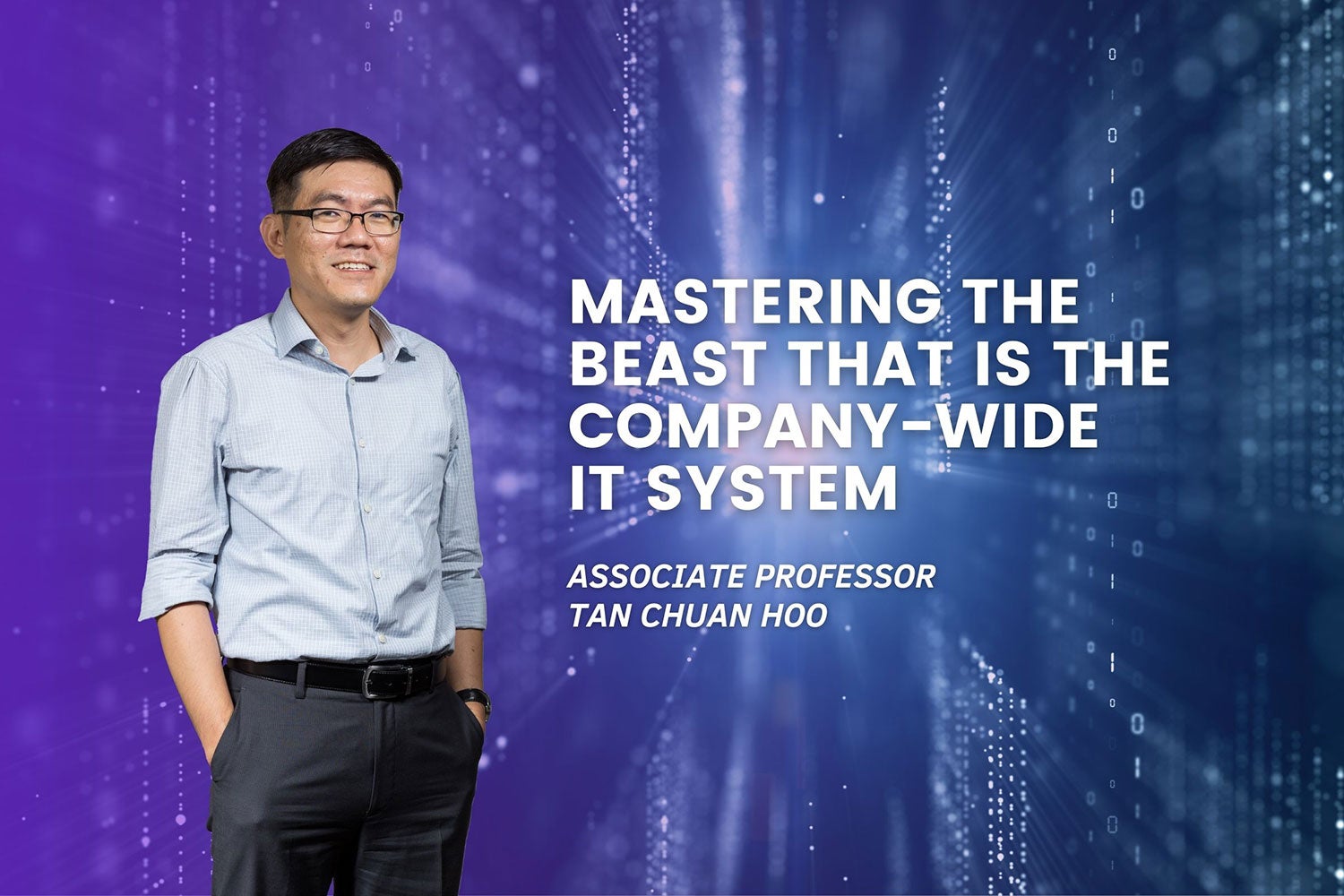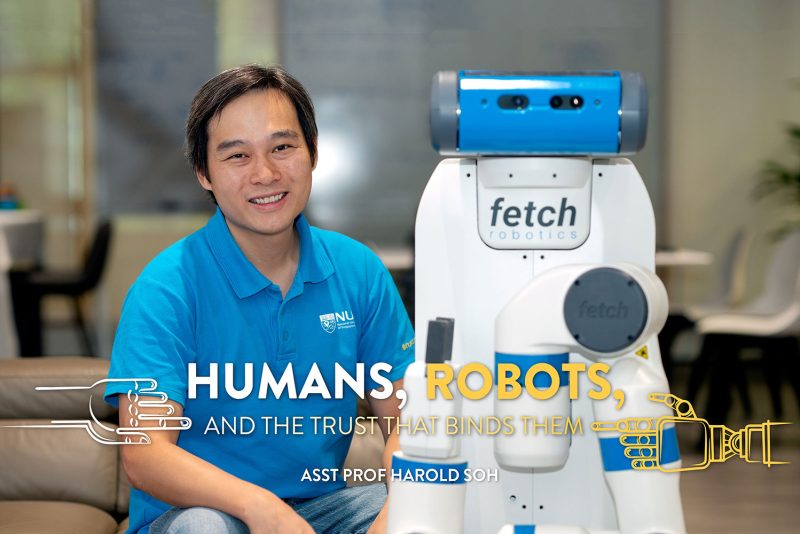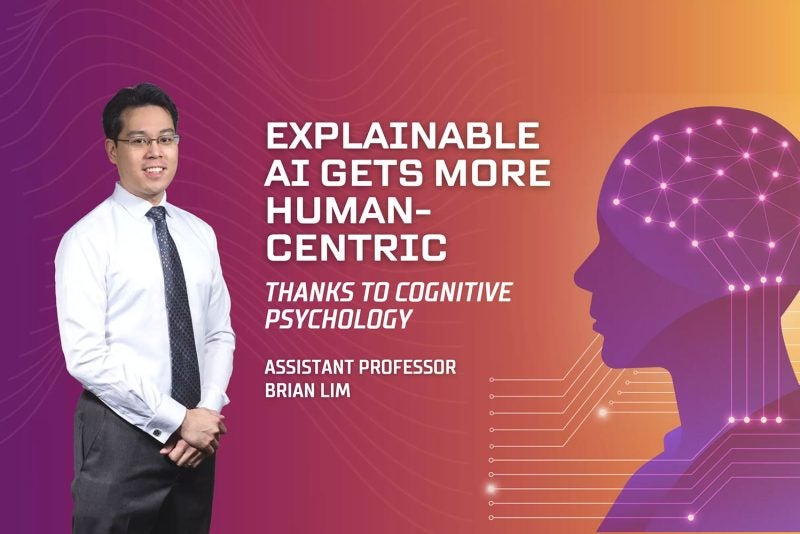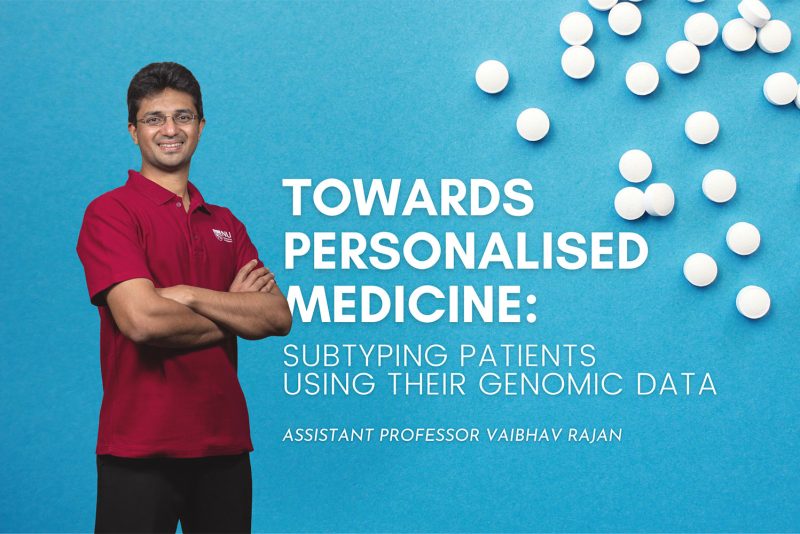Anyone who’s part of an organisation, big or small, will likely be familiar with a company-wide IT system of some sort. It’s the boon and bane of many an employee’s existence, allowing them to deal with HR-related matters, manage their consultancy work with third parties, help track client projects and interactions, and so on.
“We call these organisation-wide systems Enterprise Systems,” says Tan Chuan Hoo, an associate professor and deputy head of the Department of Information Systems and Analytics at NUS. “They connect all the relevant employees, work processes, and workflows throughout the organisation.”
Enterprise systems, for example, provide a way for employees to apply for leave, manage tenders, deal with sales, handle billing, track project progress, monitor order fulfilment, among a myriad of other functions. Companies implement them because they herald the promise of enhanced performance and efficiency — but reality sometimes falls short.
“Many of these systems fail to deliver and one reason is because they’re complex to use,” says Tan, whose research interests include the digitisation of firms. “The extent to which an organisation can extract value from enterprise systems depends greatly on how competent users are at it.”
Given how widespread such systems are, Tan felt compelled to study them. “We were keen to find out how users acquire, assimilate, and exchange knowledge about enterprise systems, and to examine the various factors that affect the development of user competence,” he explains.
“We call these organisation-wide systems Enterprise Systems,” says Tan Chuan Hoo, an associate professor and deputy head of the Department of Information Systems and Analytics at NUS. “They connect all the relevant employees, work processes, and workflows throughout the organisation.”
Enterprise systems, for example, provide a way for employees to apply for leave, manage tenders, deal with sales, handle billing, track project progress, monitor order fulfilment, among a myriad of other functions. Companies implement them because they herald the promise of enhanced performance and efficiency — but reality sometimes falls short.
“Many of these systems fail to deliver and one reason is because they’re complex to use,” says Tan, whose research interests include the digitisation of firms. “The extent to which an organisation can extract value from enterprise systems depends greatly on how competent users are at it.”
Given how widespread such systems are, Tan felt compelled to study them. “We were keen to find out how users acquire, assimilate, and exchange knowledge about enterprise systems, and to examine the various factors that affect the development of user competence,” he explains.
Becoming competent
In particular, Tan and his collaborators — Lele Kang from Nanjing University, Ke Weiling from Shenzhen’s Southern University of Science and Technology, and Peng Chih-Hung at the National Chengchi University — were interested in four factors.
First, they wanted to see how the demands of the job affected an employee’s ability to become competent at using his/her company’s enterprise system. “When someone’s workload is very high, it may be difficult, if not impossible, for users to find the time and energy to acquire the associated technical skills and business knowledge,” says Tan. “Or sometimes the task at hand just exceeds the employee’s capabilities.”
Next, they looked at the types of resources employees had at their disposal, and how these subsequently affected the way user competence was developed. Such resources included traditional training support structures like user manuals and help from the company’s IT desk, as well as support the employees got from their peers. Lastly, the researchers looked at the quality of relationships between employees and their supervisors.
With this framework in mind, Tan and the team approached a China-based consulting firm to help them gather the data they needed for their analysis. At the time of the study in 2016, the Asian country had numerous fast-growing organisations that had just launched. Consequently, many had recently implemented their first enterprise systems — and the firm had a role to play in getting some of these off the ground.
The firm reached out to nearly 300 users across six electronic manufacturing firms, which all employed the same enterprise system. Each user was given a survey form containing questions about the four factors described above. Four months later, after the users had time to familiarise themselves with the enterprise system, they received a follow-up form.

A strong bond
As Tan and his fellow researchers sat down to analyse the data they had gathered, a clear — and unsurprising — pattern began to emerge. “We found that the most important factor was basically the interaction between the leaders and their subordinates,” he says.
Employees who received more support from their supervisors developed a higher level of user competency with the enterprise system compared with their counterparts who weren’t supported as well, the findings revealed. “That’s because users can communicate more frequently with leaders who have a better knowledge of organisational structures and can offer a high-level understanding of the work systems,” explains Tan.
Additionally, an open channel of communication allows employees to have greater clarity regarding their roles and better opportunities for career growth. “This motivates them to be engaged and more willing to explore how they can apply the system to a greater breadth and depth so they can maximise their performance,” says Tan.
Strong leader-employee relationships also allows the latter to gain more responsive feedback on their performance, which in turn helps them feel more confident about what they acquire from the enterprise systems, he adds.
Overall, this factor outranked the other three — having peer support, training support, and a low workload — in terms of impact on user competence. “That was something that was quite surprising to us because for a long time, we’ve always thought that an organisation must provide a lot of support structures to help employees build up their competencies,” says Tan.
His advice to firms? “You may not have very sophisticated technology, you may not have very sophisticated policies, but focus on the person leading your employees — that’s the most direct thing you can do.”
It is advice that is pertinent in these pandemic times. “Having a very constant kind of support in terms of interactions with employees is very important, particularly in the current Covid-19 pandemic situation,” says Tan. “With the trend towards working from home and flexible work schemes, the demand on user competency in accomplishing jobs using the systems is even more demanding.”
The researchers published their findings in a paper earlier this year. Today, Tan and one of his co-authors, Ke, continue to work on enterprise systems. “Our paper found that support structures don’t really moderate the relationship between work overload and competency,” he explains. “So we’re looking at what can be done to strengthen these support structures to make them more effective.”
“An enterprise system is like a big monster that connects everyone in the organisation and everyone uses it,” adds Tan. “We want to help tame that monster.”
Paper: User Competence with Enterprise Systems: The Effects of Work Environment Factors
































